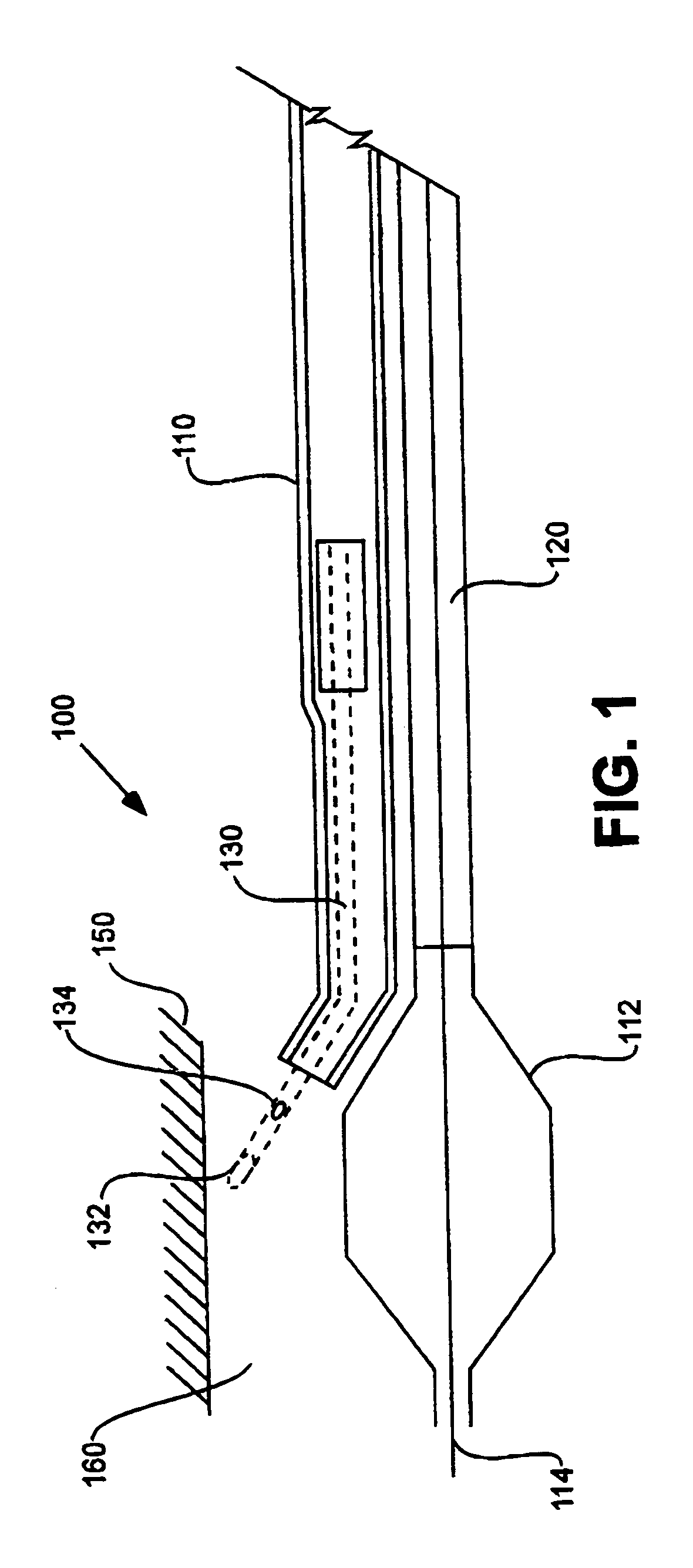Systems and methods for detecting tissue contact and needle penetration depth
a tissue contact and needle penetration technology, applied in the field of needles, can solve the problems of difficult to determine the penetration depth of the needle, difficult to determine the contact time of the needle with the organ, cavity wall, or vessel wall,
- Summary
- Abstract
- Description
- Claims
- Application Information
AI Technical Summary
Benefits of technology
Problems solved by technology
Method used
Image
Examples
Embodiment Construction
[0022]Systems and methods for detecting tissue contact and needle penetration depth are described. In the following detailed description of the present invention, numerous specific details are set forth in order to provide a thorough understanding of the present invention. However, it will be apparent to one skilled in the art that the present invention may be practiced without these specific details. In some instances, well-known structures and devices are shown in block diagram form, rather than in detail, in order to avoid obscuring the present invention. Several exemplary embodiments are described herein, and it will be appreciated that alternative embodiments exist within the scope of this invention.
[0023]FIG. 1 illustrates a side cross sectional view of one embodiment of a fluid delivery catheter 100. The fluid delivery catheter 100 can be used to provide therapeutic agents to a particular region of a patient's body, for example, to prevent or treat arterial disease (e.g. arte...
PUM
 Login to View More
Login to View More Abstract
Description
Claims
Application Information
 Login to View More
Login to View More - R&D
- Intellectual Property
- Life Sciences
- Materials
- Tech Scout
- Unparalleled Data Quality
- Higher Quality Content
- 60% Fewer Hallucinations
Browse by: Latest US Patents, China's latest patents, Technical Efficacy Thesaurus, Application Domain, Technology Topic, Popular Technical Reports.
© 2025 PatSnap. All rights reserved.Legal|Privacy policy|Modern Slavery Act Transparency Statement|Sitemap|About US| Contact US: help@patsnap.com



